What follows will be as obvious as our common humanity to many readers. To others it may appear to be a spineless excuse for idiocy and criminality. How to explain such contrary perspectives is itself an interesting question to explore. But if you are curious as to what mechanisms open the doorway for some people to join radical activists and/or religious cults then stick with the post or scroll down towards its latter half.
Canadian filmmaker Boonaa Mohammed (as quoted on ABC News interview — @ 10 mins):
I kid you not. Muslims themselves do not really understand how people become radicalised — because it’s such a foreign concept to mainstream Islam and mainstream Muslims.
The film Tug of War (link is to trailer but be sure to check the interviews beyond the trailer) has been criticized for not offering an answer to the question of prevention but even the question of how it happens seems to elude many, both Muslims and non-Muslims. The latter very often simplistically blame the Quran and the Muslim religion generally, but most Muslims do not become violent. Others equally simplistically blame various grievances, but there are many more aggrieved persons in the world than violent ones.

One theme that has repeatedly surfaced in my readings of religious and other forms of extremism is of individuals finding themselves cut adrift from conventional moorings: a respected place in society, a family, a career, a home. Radicalisation is costly and those of us focused on job and family are not going to take time to explore an alternative option that would mean leaving them behind. We are likely to consider the very idea as crazy or self-indulgent. (See below: Radicalisation to Escape Disconnection)
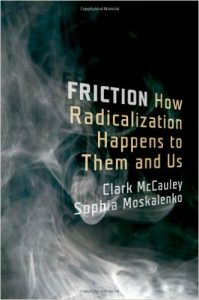 This theme leads us to the next mechanism involved in radicalisation addressed in Friction: How Radicalization Happens to Them and Us by Clark McCauley and Sophia Moskalenko. Here is the opening of their seventh chapter:
This theme leads us to the next mechanism involved in radicalisation addressed in Friction: How Radicalization Happens to Them and Us by Clark McCauley and Sophia Moskalenko. Here is the opening of their seventh chapter:
For many individuals, the path to radicalization is blocked by prior routines and responsibilities. Supporting a family, building a career, and attachments to friends and neighbors are all jeopardized by committing time and energy to political activism; joining an illegal and dangerous organization costs even more. But what if everyday commitments and attachments are lost? Perhaps parents die suddenly or a spouse unexpectedly departs. Or an individual moves from home to a remote city or a foreign country and has to begin again with no social ties and few resources. Or civil war ravages the country, destroying families, jobs, and social networks; streets become dangerous, and fear follows people home. Disconnected from everyday routines and relationships, an individual becomes an easy prospect for any group that offers friendship and security. If the new group comes with an ideology, new ideas may be embraced along with new friends.
McCauley, Clark; Moskalenko, Sophia (2011-02-02). Friction: How Radicalization Happens to Them and Us (Kindle Locations 1585-1592). Oxford University Press. Kindle Edition.
To continue an important observation introduced above — not everyone who goes through experiences that open one to a radical questioning of one’s belief system and an ability to embrace quite new ideas become radicalised.

As for the other mechanisms they have discussed they provide two case studies, one from late nineteenth century Russia and the other a modern contemporary, and introduce some of the psychological studies that help us understand the behaviour.
In 1870s Russia students who moved to a major centre to study found themselves as part of a “brotherhood”, a new family, as a result of radical students setting up communes to provide their peers with food, shelter and to assist them with any other needs that might arise. They were “friends of humanity”, always willing to respond to fellow students whenever they found themselves in a difficulty.

McCauley and Moskalenko introduce readers to “Vanechka” (Sophia Andreevna Ivanova). The information they provide derives from her autobiography. She lived in a provincial town, one of ten children, and both her parents died by the time she was sixteen. Having an idealised view of Moscow and places of higher learning, Vanechka asked one of her brothers to help her move to Moscow where she hoped to pursue a higher education. Unfortunately disappointments followed. Two other brothers of hers who had been in Moscow were forced to leave as a result of work commitments and poor health, leaving her completely alone in a big unfriendly city with no money and no place to live. She had no education or skills, and her job opportunities were limited.
One job she found required twelve hour days for pay that was inadequate to cover both rent and food. Vanechka jumped when an opportunity to work in a printing workshop was opened to her. Books had long been her love. The workshop happened to belong to Myshkin, a revolutionary, and had a secret room where revolutionary tracts and literature were printed, although Vanechka knew nothing of this at first.
Two women in the workshop who befriended Vanechka were “typical nihilists” and students of the day — short hair, carelessly dressed, stern looks — and over time they came to trust Vanechka enough to work in the secret room. Such a trust was, of course, a great honour. When her coworkers learned of her financial plight they organised a commune in the printery using its spare rooms for a common pool of money, food, clothes, and other necessities. Other revolutionaries would be taken in from time to time as needed (as when they were hiding from police). Vanechka was part of the circle.
Her boss, Myshkin, did take her aside to ask if she understood the danger of being associated with people but considering herself such an insignificant person in the larger group she scoffed at the idea that the authorities would ever want to arrest her.
Vanechka was arrested, however, and jailed, when the police shut down the printery. Under interrogation she found herself following the advice her friends had given her — to be prepared for anything to to say nothing. Luckily her brother was able to arrange for her release but then she found herself once more without social supports. Her friends all remained in jail and she was once again without a job, without an income, without a place to stay.
She decided to move to St Petersburg where her friends were awaiting trial. At least she could visit them in prison. There she found another job in a printery and once again found friends among radical supporters of jailed comrades.
Her new friends, again radicals, gave Vanechka the support she needed and in return she found herself participating in their activist programs. She was arrested as part of a protest activity and sentenced to Siberian exile.
She escaped, and soon afterwards rose to the exclusive ranks of the executive committee of the revolutionary group People’s Will and used her experience to organise and run an underground printing press. She married the convicted terrorist Kvyatkovksi. When he was sentenced to death she begged the court to be given the same sentence with him but was instead given four years hard labour. She died in Moscow in 1927.
One can readily identify the moments of breakdown of stable supports in Vanechka’s life, and where her life’s path was directed to radical opposition to the State.

The contemporary case-study in this chapter is Muhammad Bouyeri, the murderer of Dutch filmmaker Theo van Gogh who produced Submission, a film critical of Islam. Bouyeri left a letter for Ayaan Hirsi Ali stabbed to his chest. I won’t repeat Bouyeri’s story here except to list key “unfreezing” disconnections in his own life:
- seven months in jail for a non-religious crime
- the death of his mother (to whom he was very close) about the same time
- his subsequent attempt at finding meaning in an idealistic project to build youth centres came to nought, partly as a result of his own deepening fundamentalism
- his loss of job
Nothing predestined Bouyeri to become a blood-stained terrorist. His life could well have taken another fork in the road. The point is, his journey did come to a fork that not everyone experiences, and when we do, so much depends upon those who are around to give us a new direction.
McCauley and Moskalenko list several different types of ungluing or unfreezing catalysts:
Radicalisation to Escape Fear and Pain
Torture and “brainwashing” techniques (coercive persuasion by means of threats, pain, fear) produce temporary compliance but not, according to studies, political conversion. Another kind of fear and experience of threats and violence is found in failed state environments. Think of Colombia, Somalia, Bosnia, Chechnya, Iraq, Afghanistan, Syria. Joining a group with guns in such states can give one a feeling of greater safety than trying to get by alone. But even strong states can produce their own terrorists by over-reacting and leading otherwise innocent suspects to fear incarceration or murder, and who then find safety by going underground and siding with radical extremists.
Radicalisation to Escape Disconnection
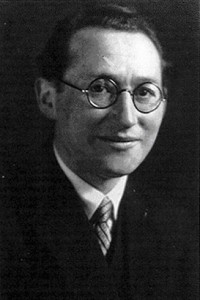
Parents have often over-estimated their importance in imparting values to their children. Since social psychologist Kurt Lewin it has been better understood that group or peer influence is a much stronger shaper of our values than our parents.
Confidence about our value judgments depends on a stable network of others who agree with us . . . If we leave our daily round of connections, or if our connections leave us, we are opened to new connections and new values. Following Kurt Lewin’s 1947 model of unfreezing, social psychologists distinguish three phases:
- first unfreezing of old connections and ideas;
- then development of new connections and new ideas;
- and finally refreezing in a new social network that provides the confidence of consensus for new values and new actions.
Notice that, in this model, changes in values that are not anchored in a new group must remain unstable and liable to further change of reversion to older forms.
McCauley, Clark; Moskalenko, Sophia (2011-02-02). Friction: How Radicalization Happens to Them and Us (Kindle Locations 1600….). Oxford University Press. Kindle Edition. (My formatting)
McCauley and Moskalenko raise another more recent concept very similar to unfreezing: biographical availability. Biographical availability is defined as
the absence of personal constraints that may increase the costs and risks of movement participation.
Personal constraints may include spouse, children, a full-time job. Those who are not so constrained and hence free to participate in political activism are generally the younger people, especially students living away from home, and older retired persons.
Interestingly McCauely and M return once again to an overlap we have noticed several times before:
The strongest demonstration of the power of unfreezing and biographical availability comes from studies of cult recruiting. These studies indicate that conversion to an intense religious group requires that the potential convert meets members of the group at some kind of turning point in life. Unfreezing, biographical availability, and turning point — all three of these appear in recruitment to the Unification Church.
Unfreezing in Recruitment to Religious Cults
At this point the authors turn to research into another bunch of “crazies” and focus on cult recruiting.
Jerrold Post appears to have been the first to recognize that cult recruiting can provide a useful model of terrorist recruiting. The analogy begins by noting that individuals who join either a cult or a terrorist group are likely to be characterized as “crazy.” Both a cult and a terrorist group require a level of commitment that most people find difficult to comprehend. Also, much has been written about how to define a cult, especially about how to distinguish a cult from other kinds of religious groups, paralleling a similar uncertainty about the definition of terrorism, especially about how to distinguish terrorists from guerrillas and freedom fighters.
McCauley, Clark; Moskalenko, Sophia (2011-02-02). Friction: How Radicalization Happens to Them and Us (Kindle Locations 1706….). Oxford University Press. Kindle Edition. (My bolding in all quotations)
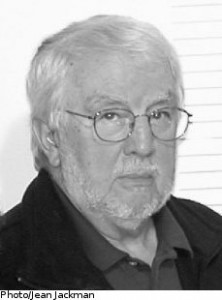
The 1965 study of Lofland and Stark, “Becoming a World-Saver: A Theory of Conversion to a Deviant Perspective” [Link is to 770 KB PDF] — in American Sociological Review, 30, 862-875 — shows the critical importance of social networks in religious conversion. When the Unification Church came to America initial conversions were easy and rapid because of key individuals in Eugene who opened to the door to sizeable social networks. Moving to new territory (San Francisco) proved a much more difficult ground to win converts because there were no prior connections with such networks. Evangelists resorted to trial and error before settling on “lovebombing” — that is, “intense, positive, and personal attention focused on potential converts” as a means of creating “instant connections” with strangers.
My own experience was conversion through a radio preacher. The church was for a time even called The Radio Church of God. Radio then still had the direct one to one connecting power of the intimate “fireside chat”.
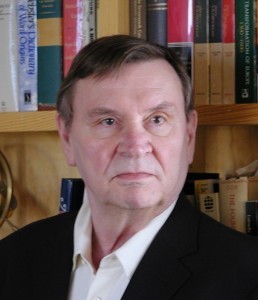
Prior to Lofland and Stark’s study the conventional wisdom was that people were attracted to the ideology of cults because they met some personal need. People with grievances or who felt deprived in some way felt the cult was offering some sort of remedy to their plight.
In retrospect the deprivation explanation was always too broad because most individuals who suffer a particular deprivation do not ever join a deviant group. Thus, Lofland and Stark did not so much contradict the established view as complement and focus it. Deprivation and grievance establish a pool of potential converts for a particular cult, but social networks determine who among the many in the pool are likely to be among the few actually recruited.
This thesis was supported by studies of attendees at Unification Church proselytisng meetings. These demonstrated that those who went on to eventually become full members had the weakest personal bonds with non-members.
In terms of group dynamics, both cults and terrorist groups offer a full array of rewards to members: affective, social, cognitive, and material. Chief among these rewards for both groups are powerful interpersonal bonds among group members. Particularly susceptible to the sense of community offered by both cults and terrorist groups are those who have lost or never developed close ties to others.
McCauley, Clark; Moskalenko, Sophia (2011-02-02). Friction: How Radicalization Happens to Them and Us (Kindle Locations 1760…). Oxford University Press. Kindle Edition.
Radicalisation of Muslim Immigrants in Western Countries
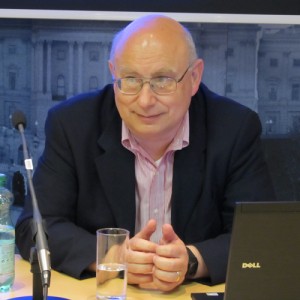
I have not yet seen the film Tug of War and I wonder if it would be a great exploration of the way Western Muslim immigrants or children of immigrants are attracted to terrorist groups. I have addressed the theme and factors involved in other posts previously. Once more won’t hurt, however. Once again we rely upon research data. In this case the starting point is the research of Marc Sageman on relevant networks.
Marc Sageman has focused on international terrorists, those who attack the United States and its allies. Starting with the nineteen terrorists of September 11, 2001, Sageman has accumulated data on an expanding network of jihadists that by 2008 totaled more than 500 individuals. A striking commonality of these individuals is that they come from the Muslim diaspora: over 80 percent are either Muslim immigrants to a Western country or the children or grandchildren of Muslim immigrants to a Western country. Sageman interprets this commonality in terms of the social and value opening that we have called unfreezing.
McCauley, Clark; Moskalenko, Sophia (2011-02-02). Friction: How Radicalization Happens to Them and Us (Kindle Locations 1768-1772). Oxford University Press. Kindle Edition.
What is going on here?
Unfreezing occurs when young Muslim immigrants in Western countries are lonely and disconnected from families and friends in their country of origin. Homesick, lonely, and marginalized—perhaps after trying Western lifestyle without relief—they seek companionship in and around mosques. There they form likeminded groups, focus on victimization of Muslims represented in news and videos from Iraq, Afghanistan, and Israel, interpret this victimization as a war on Islam that also makes sense of their own experience of discrimination against Muslims in Western countries, and then, if they can connect with al Qaeda or another source of training, they turn to terrorism. In this account, group ties (Sageman’s “bunch of guys” formulation) come first. Then a group develops outrage for group and personal grievances, accepts “war on Islam” as the interpretation of their grievances, and group polarization … moves the group to terrorism if it can find access to weapons or bomb-making skills. Sometimes, as with the case of Muhammad Bouyieri … the weapons can be more primitive than bombs.
McCauley, Clark; Moskalenko, Sophia (2011-02-02). Friction: How Radicalization Happens to Them and Us (Kindle Locations 1772-1781). Oxford University Press. Kindle Edition.
For immigrants the disconnection comes with separation from friends and family at home. For the children of immigrants it is the experience of discrimination that disconnects them from the country of their birth. Sageman sees isolation and alienation as the open doors to radicalisation among young Muslims in Western countries. Open doors potentially make possible a vast range of new identities, “but for a Muslim living in a non-Muslim country, shared religion is likely to be a high-salience source of similarity and support.”
If you enjoyed this post, please consider donating to Vridar. Thanks!

When the regular system has broken down or doesn’t seem to work for some of us, some people turn to smaller, local, tribal groups for support. Like say, gangs. Or churches. Or cults. Or movements. Some kind of alternate support mechanism.
Neil: I don’t know if you want to talk directly about the Armstrongs. But I remember listening to the elder Armstrong’s broadcasts and magazine as a teenager. And I’ve since researched their Anglo American apocalyptic. Which resonated with my background as an Army brat, overseas during the cold war.
I never accepted it to be sure. Because it seemed to be advising America to begin WW III. As the promised Apocalypse. Which we assured, we would win.
Disarming or deactivating specifically that incredibly dangerous and destructive notion, has been one of my lifelong projects, in fact. Since nobody really “wins” a nuclear apocalypse.
There were other disaffected movements that attracted me though. Since the accepted religion seemed so fantastically destructive.
The prophetic message was that one third of the US and British Commonwealth nations (the white ones, that is — the African and Asian ones were our subjects) would die of famine and disease; one third would be killed in the coming nuclear war with a German-led revived Europe, and the remainder made slave-labour. Only those of us who were fervently committed to “doing the work” of supporting the Armstrongs in their God-ordained commission to warn the world and preach the gospel would escape these horrors by being taken to a place of safety which was generally thought to be Petra in Jordan. Others who had heard the message and became coworkers or members who were not very zealous in praying and tithing and becoming perfect were the “lukewarm” Laodicean church who would be martyred in that time of slavery for refusing to work on the sabbath. That condition would exist for three and a half years, at the end of which the world would face annihilation as the Communist hordes of the Soviet empire, China and other Asian nations advanced to take on the European power at Megiddo in Palestine. At that point Jesus would return, gather and make immortal those he had protected in their place of safety, and zap both the Europeans and Asians with his mighty powers. There would be zillions dead, blood up to horses bridles, and we with Jesus would then begin the task of rebuilding the “wonderful world tomorrow”, ruling and guiding the survivors. First job of this new millennium was to bury all the dead. Great story.
Somehow martyrdom for the faith was feared as a punishment for spiritual slackness. But that did not apply to the two witnesses who would be slain in Jerusalem, and whose deaths, dead bodies for three days and resurrection would be witnessed worldwide via television. (I guess slavery didn’t preclude us watching TV.)
1975 in Prophecy and The United States and British Commonwealth in Prophecy. The latter work was mostly plagiarised from J.H. Allen’s Judah’s Sceptre and Joseph’s Birthright — promoted by the British Israel folk.
Scary stuff. I guess Armstrong was so popular, and was able to broadcast all over the world, because his Plain Truth magazine, and broadcasts, generally seemed slightly more moderate?
Or in any case, accepting apocalypse was at the time more acceptable among fundamentalists. And unfortunately, apocalypse was in some ways more plausible after the invention of the nuclear bomb.
Fortunately, most of that is behind us today.
Your point about the broadcasts and articles in the Plain Truth magazine being more moderate is very true and very significant. There are gradual steps towards full membership and the full “strong meat” doctrines are kept for those who prove themselves to be the most committed and pliable. The “milk” is for the babes of the world. For example, the church would teach publicly about tithing from time to time, but the public – and new members – were not aware that there were actually three tithes. Some coworkers were not even aware that there was a church behind the Plain Truth because it would stress it was from “Ambassador College”.
Interesting how the language of the Bible uses the vocabulary of tough-minded radicalization.
Along those lines, don’t forget the line that if our Christian doctrines seem strange, that is because we are learning a special truth, not known by the rest of the “world.”
So our vanity and pride are pumped up. And our sense of difference or inferiority relative to the rest of the world, is taken care if. By the assertion that the rest of the world is lost in delusions, and cannot perceive “real” truth.
I’m not sure if Herbert entirely wanted an Apocalypse. But I’ve noticed that some fundamentalists and evangelicals in general, in spite of their fear, will look forward to – and at times work actively to create – an Apocalypse. Because they think they will be protected. And will come out on top.
At times, listening to Herbert and many radio and TV -evangelists back in 1965, I thought I detected a certain satisfaction with the apocalypse. Which greatly alarmed me. If they liked it so much, perhaps they would even try to make it happen. We already had the Cold War. Which could have gone nuclear any second.. And not long thereafter in fact, we got the 1967 Israeli war.
Fortunately his son Garner Ted eventually made a laughing stock of it all.
Herbert was too in love with the high life to want the apocalypse. He was not what he seemed — to both the public and his followers. He was a con man, a liar, a long-time sexual abuser of his daughter.
It was different for the members.
One coworker (a financial supporter of Armstrong’s church but not a member) attempted to kick start the apocalypse by setting fire to the Al Aqsa mosque. http://vridar.org/2009/09/06/40-years-on-denis-rohan-and-the-road-to-the-apocalypse/
We followed the news avidly and excitedly interpreted many events as leading towards the end time prophetic fulfillment. There was a real excitement about the coming end. We’d speculate on how we would all be taken to the “place of safety” — Petra in Jordan for most of us. People sold up, left jobs, burned bridges all in expectation that the end was near.
I think that points to at least two things that make modern cults so appealing to many. But the main thing is the notion of updating the Bible to our own times. Which is exciting- but also dangerous, when it goes wrong.
There are several famous academic studies about various cults predicting the End at a specific date. And about what happened when that date came and went. I think there’s one on Jehovah’s Witnesses, or Seventh Day Adventists. Festinger developed his theory of cognitive dissonance around how religions rationalize such failures.
Yes. Some people are disillusioned and walk away when a prophecy fails, but many merely reinterpret the prophecy or explain away its apparent failure. We did the same with our 1972 date. Cognitive dissonance works at so many different levels in cults. Incredible mind-games are at work. Self-imposed cognitive behaviour therapy. Bizarre alternative meanings are given to common words like love. Some cult members can do post graduate studies in the very fields you’d think would lead them to toss away their faith — but cognitive dissonance is real.
I think that once they get you to despise the whole world, and it’s logic, that puts you into an infinitely changeable space. Where any otherwise quickly-rejected idea, can be entertained.
Maybe the literature on snapping, might be relevant? Once our relation to the entire normal social and physical world is snapped off, then we are prone to accept the cult, as our whole “New world.” We rethink everything, according to New rules.
When the whole “world” is rejected, then all counterarguments disappear or are abolished. By our new leaders. In one fell swoop.
Here I think regular mainstream religion has many cultish elements. Especially the rejection of the world.
Especially the priests and ministers take that as central. As they accept a whole ” new spirit”, a wholly different orientation from the secular “world.” Even from the material world.
Priests especially don’t get married; they take special vows, live in cloisters, and so forth. It’s a different life.
Preachers hear and accept this more radical message or call in the Bible. But cults hear much of it too.
Yes, and not only is “hating the world” a key plank in their presentation, but above all is the surrendering of all confidence in one’s own thinking. One must come to “abhor oneself”, too. The way of truth only comes from God and “man’s reasoning” is in rebellion against God.
That basic method was not unique to Armstrongism. I have seen it over and over — and after I left the cult and began exploring and comparing other religions I was struck on noticing a Hare Krishna speaker using the very same lines in his presentation. This same process is covered in some of the posts I have written in relation to Islamist radicalisation, too.
After leaving the cult I was looking forward to a world of sanity and freedom from such cultish elements but of course, being particularly sensitive to what I had been through, I could not avoid noticing many of the same processes at work in other mainstream religions and even in the political and public sphere. The difference was that in the public sphere there was room for debate; in mainstream religions the tactics came in various strengths.
I likened the cults to the heroins; pentecostals to the marijuanas; the mainstreams to aspirins — and the dosage one takes is always important.
In other posts on religion here I have attempted to share some of the scholarly research basis for your point about the different mind-world of the believer. That’s why I don’t think attempts like those of Jerry Coyne to just bash away at how opposed to science religion is very productive. The believer knows that very well. But they are not in the same mind-set as the unbelieving scientist and all the hullabaloo the scientist can deliver will make not one whit of difference to the believer. That’s why understanding is so important.
Those believers who are persuaded to leave do so for reasons that would take them out of their belief without the assistance of some of the virulent anti-religious declarations (or despite them).
I think you are mostly right of course. I feel that strong denunciations of religion have their place. But I prefer your more rational forum here.
By the way though, I think you might underestimate the radicalism of mainstream priests and ministers. Above the average churchgoers, are the preachers. Who typically note, have given up on the secular and material world. To dedicate their entire lives to religion, and spirit. So in a sense, all priests and ministers are cultish extremists. At least in their own lives.
When I was in the process of leaving religion behind I frequently found myself incensed at those attacks on my former faith that I felt were grossly misinformed and outright false. Not that such attacks were going to drive me back into the fold. Certainly not. But they did nothing to lead me out.
Another interesting comparison with the Roman Catholic Church. In the Armstrong cult from time to time we openly conceded the parallels between the two churches. Our rationalisation was that the Devil had set up a mirror-image counter part to the true Church of God.
Absolutely. But don’t overlook mainstream Protestant ministers. Especially the more spiritual ones. The whole flip side to loving invisible spirit, is a massive hate for everything else. Hating and retreating from the rest of the world.
This hate was to be sure, was partially toned down by ministers. Who told us to “hate the sin, but love the sinners.” But I can’t find that line in the Bible. What we do find, is an Old Testament God bent on hating and killing those who oppose him.
So there was the minister, preaching hate. And there were always a few intermittent churchgoers, who liked that hate. Who liked the violent Old Testament God. And who liked own their guns, too.
And that was where, I suggest, our right wing Christian terrorists come from. Like the recent Mr. Dear, shooting up a Planned Parenthood center in Colorado.
More moderately I’d say it’s long been said by preachers that there’s a deep “call” in the Bible, to the priesthood or ministry. Most everyday Christians don’t hear it, or accept it. Since it consists of very radicalizing calls.
The “call” is to give up everything, even common sense, to follow the new way. Few thankfully actually do this. Except? Those who become preachers. Or I suggest, cultists. Or one extreme branch of cultists: terrorists.
Terrorists to be sure, have not heard the voice correctly. Or they have heard only the violent, Old Testament voice.
Which may support the notion that texts alone, even sacred ones, are dead letters until interpreted by persons who are products of certain social supports and influences mixed with their own personal life stories and genetic makeup.
I partly agree. More exactly though, I feel the Bible objectively contains several different major theologies or voices. But which one you hear or follow, does indeed depend on your own personal bent.
Or the apparent demands of a particular moment.
Having heard many military chaplains, I was shocked with how the usual message of peace, and turning the other cheek, was sometimes suddenly dropped before major combat operations. In favor of quotes from the more violent God of the Old Testament.
The Bible at times allowed this. Ecclesiastes telling us to change directions, theologies, when convenient: “for everything there is a season. ” Paul urging being all things to all people; or being whatever a particular audience wanted or would hear?
But this cynical pragmatism or inconsistency, gives the lie to the assertion of one continuous truth. And leads to two-faced behavior.
I guess my main point here would be that we can’t entirely blame radicals, cultists. Because lots of them learned their attitudes, from the holy books themselves. So finally? We should largely blame … our holy men. Our religious books, themselves.
It is clear to me that the Bible itself for instance, contains a powerfully radicalizing voice. Calling some to discipleship, and the priesthood, the ministry. But also calling people to other forms of the extreme rejection of, hate for, common material sense. And hate for the world.
Cultists, even terrorist cults, are to some extent victims of the radicalizing voice deep inside mainstream religion. And in our holiest religious books.
Not sure how we quantify “lots”, but the research I have been reading and posting about argues, on the contrary, that the holy books in an overwhelming majority of such cases are used as rationalisations of attitudes formed prior or by entirely other processes. The assertion needs to be tested, not assumed. What is it that leads a relative few to contradict the standard readings of their peers and social supports? Why does the focus of reading change with changing cultural developments and histories?
There are other voices in the Bible; more peaceful ones. And which ones we choose to hear, to be sure, depends on many external factors. Including our own circumstances, and individual bent. However, I’d have to say that at least some of the blame for cults, even for religious terrorists, has to be laid at the door of even our mainstream preachers.
I’ll refine my last statement , by saying that most mainstream churches indeed take some pains to preach not the violent, but the “Love” theme in the Bible. However I’m currently doing some informal, original language-based research. From that it seems clear that the Bible itself, which is often assigned reading in mainstream churches, contains many of the more dangerous phrases and concepts used in extremist cults.
You yourself noted from your own experience for example, that the angry and violent Biblical themes of apocalypse, and “hate” for the “world” were important in the Armstrong cult.
The mainstream churches are eager to distance themselves from extreme and violent outlying groups. But from firsthand testimonies like your own, among other sources, I’m hearing ideas, language from cultmembers, clearly from the dark side of the Bible itself, after all. Whose authority was largely built up by mainstream churches.
So I’m putting a significant amount of blame on the Bible itself. And all churches that promoted it. Partly based on the verbal and written testimony of current and former cultmembers.
Possibly if you yourself reviewed your personal experience, you could help fill in some blanks. As to exactly how the radical churches and other organizations were originally related to, but of course selectively borrowed from, common mainstream sources.
Here you and I both might begin to at least informally break relatively new ground. In part thanks to your own firsthand experience and insights. Coming to conclusions that might often confirm, but now and then differ from, current published papers.
Theo van Gogh was a Dutch actor, columnist and filmmaker, not Danish. He was a descendant of Theo, the brother of Vincent van Gogh.
You mention the letter that Mohammed B stabbed to van Gogh’s chest, but not its content; the letter warns about Jewish political actors in Dutch politics and contains repeated references to Jewish party-backers. I suppose you don’t wish to bring anti-Semitism as a factor for radicalisation in the discussion.
Thank you for bringing the typo to my attention and for the bit of irrelevant trivia to add to the post.
But oh my god, Bob. Have you seen that letter? Read it at http://balder.org/articles/Theo-van-Gogh-Murder-Open-Letter-To-Hirsi-Ali.php Only the most hyper-defensive and callous towards Ayaan could possibly think the most significant detail of that letter was anti-semitism.
But more to your own point, what are you suggesting about the authors, Bob? Are you suggesting the social psychologists and anthropologists etc are trying to hide the culpability of antisemitism as a factor? Or are you suggesting that I am anti-Semitic and to protect myself I want to hide this as a factor in radicalisation? (You have failed to answer my direct questions along these lines in previous comments — a failure that disturbs me.)
Your hypersensitivity and defensiveness over anything relating to the mere mention of the Jewish people, and the related implications of your remarks about me and my posts, are are becoming offensive. If you think I am anti-Semitic or anti-Israel then please stop visiting this blog.
Or perhaps you could explain how anti-semitism is a mechanism that of itself led to Bouryeri’s radicalisation, to radicalisation among Jews who become radicalised, or how Islam is a mechanism towards radicalisation among non-Muslims who become radicalised?
Or do you deplore anyone addressing the theme of unfreezing without referencing anti-semitism if there is an opportunity — even a few lines in a rambling letter primarily aimed at the sins of Ayaan — to do so along the way?
Or are you suggesting I am somehow in favour of anti-semitism and don’t wish to associate it with hate crimes and you see evidence of this defect because I failed to address antisemitism in this post
(Other times I am told that the rambling spiel of terrorist complaints are irrelevant — that only their cry of “God is Great” is of any relevance when we wish to understand their motive!)
I wouldn’t call mistaking ‘Danish’ for ‘Dutch’ a ‘typo’. And it does suggest that you took information on the van Gogh killing from the Danish website that you now quote – and didn’t even mention as a reference in your original posting-.
Am I entitled to find it disturbing that you source your posts from such an anti-Semitic website? Does that disqualify me form commenting on this blog?
Implicit ongoing imputations of anti-semitism are not civil discourse and thus in violation of the comment policy.
Bob, it ought to be as plain as day that my posts are taken from McCauley and Moskalenko’s book Friction. If you read carefully you will notice I follow closely their chapter narratives and quote extensively from them. I knew nothing about a Danish site until I sought a copy of the letter to respond to you — and did not even notice it was Danish until you said so now. If it is also an anti-semitic site I did not notice because I read nothing but the letter. Had I known I would have found another source. I demand you withdraw your insinuations of anti-semitism and apologize to me for your incessant innuendo or be banned. I have had enough of your bile.
Before you go, though — do quote the anti-semitic words and count them and then do a ratio comparison with the remainder of the content of the letter and then tell me why you choose to single out anti-semitism in a letter that is one long tirade against the sins of Ayaan. Get some sense of proportion for god’s sake. Other people do suffer too, you know, and are also targets of hate crimes.
OK, you upset me by labelling ant-Semitism as trivia. I responded in that mindset; but I have no interest in an ad hominem slugging match.
I’ll clarify that I haven’t accused you of anti-Semitism. What I signal is that ant-Semitism is a component in terrorism that we have seen in the last 50 years or so. This anti-Semitic factor is often downplayed or ignored, – and not specifically by you alone -but it is there.
Good example is the recent terrorist attacks in Paris: they attacked a supermarket in Paris; not any supermarket, but a Jewish supermarket. And then they attacked a theatre; not just any theatre, but a theatre with Jewish owners. Do you think it is a random event that those 2 Jewish targets were selected out of all the supermarkets and theatres in Paris?
The van Gogh assassination also has this component, even though neither van Gogh nor Hirshi Alin are Jewish themselves or have expressed Jewish sympathies.
What I am concerned about is that this anti-Semitism goes unrecognised, and thus bcomes more of an irrelevant, or even tolerated behaviour.
I did not label your remark about anti-semitism as trivia — I was referring to your other point about the family name of the victim. But I did say your reference was gratuitous with respect to the arguments being presented, and it is indeed “trivial” in the extent of its appearance in the letter left for Ayaan Hirsi Ali. Did you read the letter? Is it really an anti-Semitic diatribe exposing an anti-Semitic motive? Or am I witnessing another instance of the toxic tendency to throw anti-semitism charges on any perceived opportunity at anyone suspected of harbouring serious criticisms of Israel?
When I posted on Jewish terrorism of the 1940s should I have made a special note of Jewish racism as being responsible for the murders of Arabs? I should think the reasons that was not the focus are obvious.
Anti-semitism, along with anti-Arab racism, has been around a lot longer and is more widespread than terrorist activity. To blame anti-Semitism for terrorism is like blaming bigotry or racism generally or Islam or religion for terrorism. It is a non-explanation. It’s like saying the reason countries go to war is because they hate each other. The question we are exploring is what mechanisms turn certain people — Israelis, Palestinians, Norwegians, Russians, Americans, Australians — to violent extremism.
I will not subscribe to the toxic agenda and hate-games of anyone branding any criticism or imagined criticism of Israel as an expression of lurking anti-semitism. I will be posting more on the Palestinian view of history based on Israeli archives, by the way, and will not submit to outrageous accusations of anti-semitism for my efforts.
Your seem to have a problem with the letter ‘i’ on your keyboard.
All fine now, thanks: http://www.vridar.org/2016/03/08/for-and-against-the-anonymity-of-the-gospels-without-table-format/#comment-76570